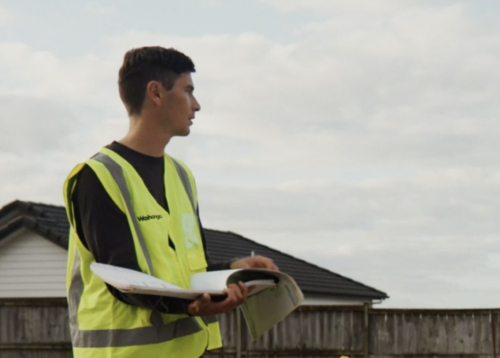These days, having a website is a not-negotiable necessity, even for a micro business (less than 5 employees). To help you get up and running quickly, we’ve put together a simple process for a ‘do-it-yourself’ professional website - at only a minimal investment.
1. Get your website address
Sometimes called a URL or domain name, this is the address for your site. There are various places for securing this all-important asset. Some of them also provide hosting, which can make your next step a lot easier too. Use their tools to enter the address you want; if it’s available you can register it for a fairly minimal annual investment.
Think about whether you want the .com or .co.nz address. If your market is local only, then .co.nz should do the trick, but consider buying the .com too, so people don’t accidentally end up going to a competitor or not being able to find you. If you supply the domestic and international market, you can buy both and have one redirect to the other. There are some other NZ-friendly domain suffixes around too, like .nz and .kiwi. If you can’t secure the preferred .co.nz, you could get one of these.
If you’re looking to create an online store, Shopify is a great option. It’s all integrated - design, hosting and payment functionalities.
2. Find a host
Your website will be stored on a server, called your ‘host’. Hosting companies have a variety of fees and plans, so choose the one that looks right for your site. Many hosts have plans specifically geared towards small or micro businesses . They may also sell virus and malware protection and have auto-site-building templates.
3. Check the plan that works for you
There are a variety of plans and options. Think about not just what you want now (a website), but also what you might need in the future. Do they have a cheap SSL certificate? Do you want an online store? What about your own email address, such as yourname@businessname.com.nz? Some of these options may be included, or you can add them at a later date.
4. Choose a template
There are loads of website builders available. WordPress is probably the best known, but another provider to consider is Squarespace. They both have their strengths, although WordPress is usually best for blogs and text-heavy sites, while Squarespace can be easier to use for a ‘newbie’ website creator.
At its most basic level a website has four pages: a home page, products and services page, about us page and contact us page. The home page should clearly tell people what your business does. It should sound exciting and authoritative, so that people will click through to the other pages.
A products/services page will go into more depth about what you do. Be sure to emphasise what makes you better than your competition.
Your about us page is there to tell people about you and why you’re really good at what you do. It should also inspire trust. An anonymous website page may make people hesitate to buy from you, but a photo and some information about you goes a long way to reassure people that you are genuine.
The contact us page should make it easy for people to visit you, call you or email you. Have a Google map of your location, or a form they can easily fill out for any enquiries.
5. Create a logo
If you don’t have a logo you can contract a graphic designer- there are plenty online - or consider making one on canva.com. Think about your brand, pick three colours, keep it simple and remember is has to be readable when it’s small. Will it be visible on a business card? That’s the torture test for a good logo.
6. Add your content
Check out what your competition is doing and think about the point of your website. Are you trying to make people visit your store? Call you for a quote? Give them information?
Also think about the template for the content too. A lot of templates aren’t very clever - if you change how many words are there, it changes everything and makes box sizes change, which can make the website awkward. If possible, aim to match your content with the filler content so that it doesn’t change the entire layout of the site.
Remember to use descriptive headings. People scan for information, so using benefit-driven headlines helps to grab their attention.
If you want a pro to do it, hire a content writer to create easy-to-read and compelling website copy.
7. Test your website
Although templates should automatically work on different devices, check the site using different browsers and phones. Do all the buttons work? Does it display nicely? Ask family and friends to check out your site too and report back any problems.
8. Publish your site
Push the ‘publish’ button and then go see your site live on the internet! Then, update all your digital collateral with your new website, get your Google My Business listing updated, let customers and suppliers know, and add your URL to any directories you’re a part of online - Facebook, LinkedIn, Twitter and Instagram too.
9. Review and refresh
Schedule a website review every month or two. Often, there will be nothing you need to change, but if your hours are different for Christmas, you have a big sale coming up or you’ve started selling a new brand, make sure you tell people about it.
Tips for getting your website to do its job
Keep it relevant
Think about your target market. Why are they going your site? What are they looking for? Create your site for them. They are your audience. Make it really obvious from the second they land on your page that this is where they need to be.
Create a professional site
People will form an impression of your site within seconds. Pay for good quality images and make sure there are no spelling mistakes or grammar errors. Always choose quality over quantity.
Project an air of trustworthiness
If you want people to buy something from your site, you need to assure customers that you are an actual person they can trust to deliver the goods. The about us page is essential for this, to put a human face behind your business.
Make your website easy to find
Once your site is up and running, it’s time to invest in SEO—search engine optimisation. This is basically making your site as easy to find as possible by helping Google to find you. There’s a whole industry devoted to this, so hunt for a guide online and start the process.
Connect to social media
Depending on your business and your target market, get onto social media. Who is your market? Where do they hang out? Boomers are on Facebook; millennials are on Instagram; Gen Z are addicted to YouTube. Are you there too? You could be missing out on a lot of customers.
Provide genuine feedback and testimonials
There is nothing more persuasive to new customers than reading reviews from people who loved your product or service. Get customers to leave reviews on Facebook or Google. There will probably come a time when you’ll get a negative review; when that happens, respond kindly, professionally and respectfully. Post the good reviews on your site as endorsement testimonials.
Keep your information up to date
This is particularly important if you want people to trust you. Delete information on your site that is out of date or old. And always keep your Google My Business listings up to date with the correct opening hours.
Make it easy for people to buy from you
Don’t put any barriers in front of people who want to buy your product or service. Make your site secure and provide all the information they need, such as shipping information, before they get to the checkout. Also, it helps to offer a variety of payment methods - not everyone has PayPal or Apple Pay.
Finally, don’t rush the process (but don’t put it off either!)
A good website will take time to put together. Even the professionals can’t throw something amazing together in a few hours. Don’t rush it. From choosing your domain name and host, through to choosing a template and filling out the text areas, there are many choices to make. Take your time and tie your decisions back to what your target market would like to see.
That said, things can be fixed and changed easily enough. If you put a spelling mistake on your site, someone will tell you and it takes only a few minutes to fix. Don’t let perfectionism or indecision prevent your site from ever going live.
If at any stage you feel you need professional assistance, there are web designers, content writers and SEO professionals who will happily offer their services.
Small Business Insurance
Leave small business insurance to our team of experts. Find out more here: https://www.state.co.nz/business
You might also like...
-
 March 2023Business Blog | State Insurance
March 2023Business Blog | State InsuranceThe pitfalls and dangers of running a business
-
 March 2023Business Blog | State Insurance
March 2023Business Blog | State InsuranceHow to grow a business and take risks
-
 October 2022Business Blog | State Insurance
October 2022Business Blog | State InsuranceSmall Biz Support
